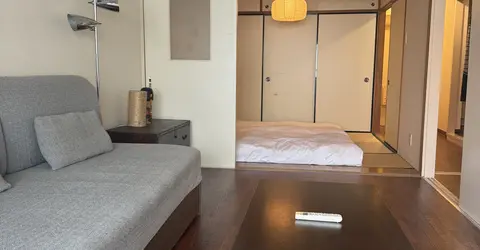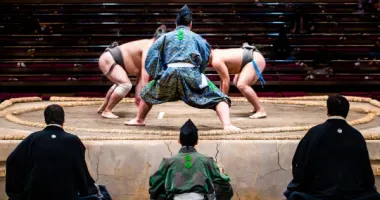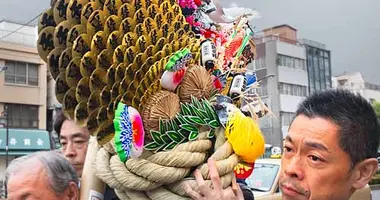Heisei Emperor's Birthday
Heisei Emperor's Birthday: there are two days in the year when ordinary people can enter the Imperial Palace grounds in Tokyo: the Emperor's birthday and January 2nd, the Emperor's New Year Greetings.
Heisei Emperor's Birthday at the Tokyo Imperial Palace Grounds 皇居, 東京
Johannes Schonherr
The text describes the Imperial festivities in December 2014. In May 2019, Naruhito became the new Emperor. His birthday is on February 23rd. Therefore, the Imperial celebrations changed to the new date. In 2020, February 24th is the holiday because February 23rd is a Sunday.
Right in the heart of Tokyo, just a short walk from Tokyo Station, you encounter a large forbidden zone: the Imperial Palace.
Throughout the year, you can stroll along the moat and look at the vintage stone walls and towers behind it and that's certainly a beautiful walk. You may also peek from Nijubashi Bridge inside the palace grounds and spot the ancient Fushimi Yagura guardhouse in the distance. But that's about it.
 Peeking into the palace grounds - View from Nijubashi bridge towards the Fushimi Yagura
Peeking into the palace grounds - View from Nijubashi bridge towards the Fushimi Yagura
The Imperial Palace precinct, or Kōkyo, is centrally located in Chiyoda ward, Tokyo, very near Tokyo Station. It is home to the Emperor of Japan and his family, and is where Edo Castle once stood.
 Visitors entering the Imperial Palace (Kokyo)
Visitors entering the Imperial Palace (Kokyo)
There are two days in the year, however, on which you can enter the palace grounds, known in Japanese as kokyo, though not the actual palace (kyuden) itself: the Emperor's birthday and January 2nd, the day of the Emperor's New Year Greetings.
I went for the emperor's birthday celebrations. The current emperor, Akihito, reigning over the Heisei Era since his enthronement in 1989, was born on December 23rd 1933. That makes December 23rd a day to visit the inner palace grounds.
Late December is a brilliant time for such a visit. Tokyo weather at this time of year tends to be bright and sunny with clear skies and fresh breezes.
Before starting out, I took a look at the English-language website of the Imperial Household Agency. The emperor would address the public three times on the morning of the 23rd, the site informed me and listed the planned times. I aimed for the last of the speeches, at 11:40 am.
 Nijubashi Bridge as seen from inside the Imperial Palace grounds
Nijubashi Bridge as seen from inside the Imperial Palace grounds Visitors in front of the Fushimi Yagura
Visitors in front of the Fushimi Yagura The Chowaden Reception Hall
The Chowaden Reception Hall Policeman in the middle of the crowds waiting for the Emperor
Policeman in the middle of the crowds waiting for the Emperor
Entering the Palace Grounds
Otemachi Subway Station, connected by long tunnels with Tokyo Station, was crowded that morning. Policemen and railway guards directed the floods of people both heading for and returning from the Imperial Palace.
Once outside the station, a long line of people formed, walking towards the entrance gate of the palace while the lines coming from the exit gates slowly entered the station.
On the wide square in front of Nijubashi Gate, the only entrance gate to the palace on the day, make-shift checkpoints had been erected.
All luggage was inspected there. Small bags could be taken inside the palace grounds after the inspection, larger bags, suitcases and the like had to be checked in. People received a receipt and had their luggage returned at the exit gate they specified. While there was only one entrance gate, there were several exit gates.
 Flag-waving at the Imperial family.
Flag-waving at the Imperial family.  Emperor Akihito and Empress Michiko.
Emperor Akihito and Empress Michiko.
At the time of the luggage check, everyone was offered a small hinomaru, the Japanese flag. Most visitors opted to take one.
Knowing of the procedure and the waiting time those checkpoints demanded, I had gone without carrying any bag. That way, I could just walk around the checkpoints, under the careful watch of police and palace guards, and join the crowd coming out of the checkpoints on the other side, carrying their hinomaru.
I didn't receive one but that was just as well. I planned to take photos and the flag would just be in the way.
I crossed the moat and walked through the usually forbidding Nijubashi Gate, right behind Nijubashi Bridge.
A large park awaited me on the other side, dominated by pine trees. All visitors had to stay on the one prescribed path, there was no straying into the park. The trail was lined with police tape, officers were standing guard every few meters.
Soon, the beautiful old Fushimi Yagura guardhouse came into full view. It had been originally built as part of Fushimi Castle in Kyoto and was moved to Edo Castle in Tokyo when Fushimi Castle was dismantled in the early 1600s under orders of the Tokugawa government.
The Great Kanto Earthquake in 1923 destroyed large parts of the Imperial Palace, American bombing raids during World War II burned it to the ground. The Fushimi Yagura however survived.
All too soon, the stroll through the park ended at another gate, the Inner Gate. Beyond it was the large square in front of the Chowaden Reception Hall, today the largest building of the actual Imperial Palace (kyuden).
From the second floor of this modern glass and steel concrete building, the emperor would give his address. The square was full of waiting people, the reception hall was to the left and a lot of TV cameras were set up to the right. They would film the emperor's address from behind the crowd.
 The Fujimi Yagura, Imperial Palace, Tokyo.
The Fujimi Yagura, Imperial Palace, Tokyo.
The Emperor's Speech
There was still time until the emperor was supposed to appear. Now was the time to find a good spot to stand, to look up at the second-floor glass window gallery where the emperor would make his address and to do test shoots with the camera to find out the best focus settings.
The waiting crowd was very international. A lot of American English could be heard, there were German, French and Italian voices here and there, there was excited shouting in Chinese. The latter most likely from Taiwanese tourists.
At 11:40 sharp, just as announced, Emperor Akihito, his wife Michiko and their entire family appeared behind the glass wall on the second floor of the building, shyly waving at the cheering crowd below.
A roar erupted from the crowd: Tenno Heika Banzai! Tenno Heika Banzai! (His Imperial Majesty the Emperor Forever!) and all the hinomaru flags handed out at the entrance went up for frantic waving. Tenno Heika Banzai! - the shouts went on over and over again, some of the loudest voices coming with strong American accents.
Once the emperor stepped to his microphone, the shouting stopped. He delivered a short speech, expressing his hopes that peace may prevail.
Once he had finished, the Tenno Heika Banzai! roar and the flag-waving erupted from the masses once more.
The emperor retreated into the inner confines of the palace, the crowd became quiet and the slow exit began.
Most headed for the Sakashita and Kikyo Gate exits, closest to Tokyo and Otemachi Stations. On the way, everyone had to pass by the Fujimi Yagura, another beautiful old guard tower that has survived both the Kanto Earthquake and the WWII bombings. Fujimi translates to "Mount Fuji viewing" and that was certainly possible from the tower in the old days - before the modern skycrapers of Marunouchi blocked the view.
Shortly before the Kikyo Gate, you could take a turn to the left and stroll into the Eastern Imperial Gardens.
 Eastern Imperial Garden.
Eastern Imperial Garden.
Eastern Imperial Gardens
The Eastern Imperial Gardens are open to the public throughout the year. Their outside gates were closed on December 23rd but it was perfectly fine to enter coming from the palace grounds.
The Eastern Gardens are a large park, impressively contrasted against the skyline of Marunouchi in the background, featuring a few remnants of old Edo Castle fortifications as well as the Tokugakudo Music Hall, a rather tripped-out example of mid-1960s concrete architecture.
There are exotic trees planted by a variety of international dignitaries, there is a small hill with tea bushes growing in orderly rows. Most of all, it is a great place to relax right in the center of Tokyo.
Website of the Imperial Household Agency in English: www.kunaicho.go.jp
Guided Tours
Throughout the year, it is possible to arrange guided tours through the Imperial Palace Grounds. Check this English-language section of the Imperial Household site for details: sankan.kunaicho.go.jp
 The moat surrounding the Imperial Palace.
The moat surrounding the Imperial Palace.




























